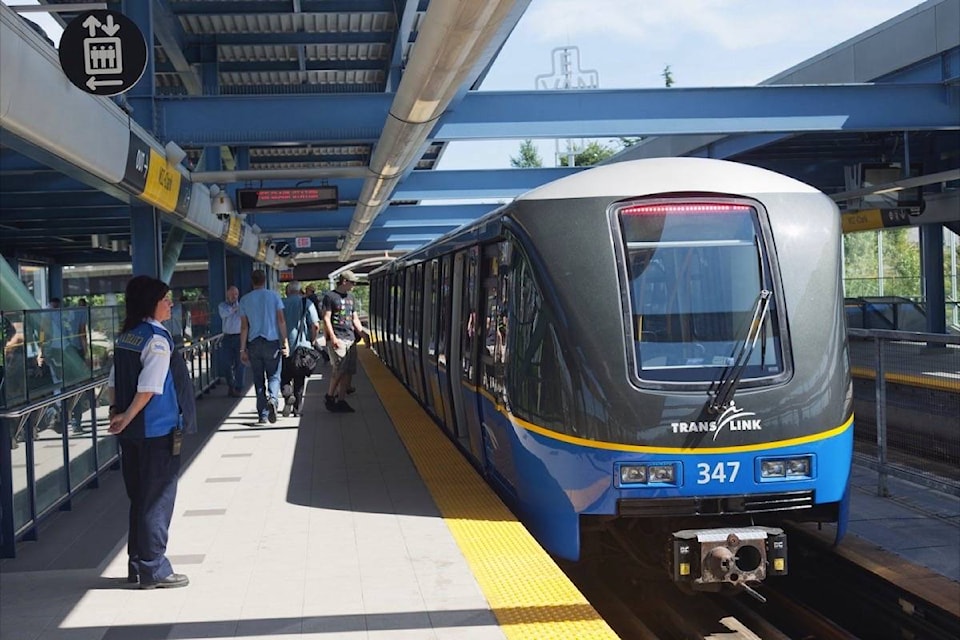SkyTrain, SeaBus and future light rail riders could soon be paying fares based on how far they travel, not how many zones they cross, as TransLink rolls out a new fare proposal.
In a briefing with reporters Monday, executives said that the transit agency was looking at moving towards , while nixing the three-zone system.
The new fare structure is expected to be more fair, according to TransLink, especially to riders taking short trips across current zone boundaries.
“Effectively, what we’re doing is eliminating zone boundaries and steep price increases for travel,” said manager of policy development Andrew Devlin.
Riders who cross zone boundaries on the Seabus between Downtown Vancouver and the North Shore, those going between Joyce-Patterson to Metrotown SkyTrain stations and anyone crossing the Fraser will see the biggest benefit if zone boundaries are nixed.
Devlin said TransLink had long heard complaints about “arbitrary” zone boundaries and “really high costs for people travelling one or two stations.”
“About two-thirds of customers aren’t going to see much of a change to the price they pay on a daily or monthly basis,” Devlin said.
“People who will be paying less are people who make a lot of trips that today happen to cross those zone boundaries. Customers who may be paying more are those who are making long trips that don’t cross zone boundaries.”
Are you worried you might pay more under a new fare structure? says most people won't notice a difference and that riders who make a short trip that goes over a zone boundary will even save money.
— Kat Slepian (@katslepian)
TransLink believes that 17 per cent of riders will see an increase of more than 10 per cent in their fares, while an equivalent portion will see a decrease of more than 10 per cent. The remaining 66 per cent won’t see any major fare price changes.
The proposed fares would be revenue neutral, Devlin said, and shouldn’t be expensive to implement with the current Compass Card system.
The distance-based fares would have a base distance of five kilometres, similar to the current $2.20 fare for a one-zone Stored Value fare. The average distance between SkyTrain stations is one kilometre.
From there, riders would pay around 15-20 cents per kilometre up to 10 kilometres total, 10-15 cents for kilometres 11-15 and 5-10 cents per kilometre up until 22 kilometres.
The distance-based fares would max out at $4.30, the current three-zone Stored Value fare.
Just to give you an idea of how the pricing structure would work under the newly-proposed distance-based fares:
— Kat Slepian (@katslepian)
TransLink for the proposed changes on Monday. Consultation closes on June 29.
The changes could come into effect by 2020, pending a positive response from riders and endorsement by the TransLink board as well as the Mayors’ Council.
Like us on and follow us on .



